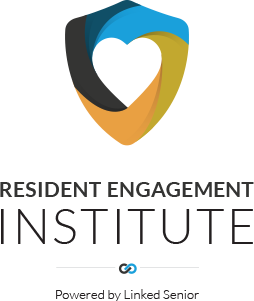As we talk to providers about the value of data, we sometimes get push back about tracking attendance and program participation. Some providers say that counting participants entering a room is no way to measure engagement. The truth is though, counting attendance is the first step in making good on our promise to provide the best care for older adults. Without taking this first step, residents will be missing out on meaningful engagement and be at risk of isolation or other adverse health outcomes. Measuring engagement is something that assisted living, memory care and skilled nursing facility providers must do because family members, caregivers and regulators now expect it.
So what is the second step? As always, this is where quantity and quality comes into play, and in our discipline it starts by actually knowing the residents and providing our staff with adequate tools, training and time, so they can build authentic engagement. The second step is about being authentic and that means being trustworthy as well as factual. Providers need to measure how well they are assessing resident needs, planning individualized engagement activities, implementing that plan and evaluating their success. Providers should measure their success, for every single resident, in real-time and make adjustments as needed without delay. Ultimately, what is measured, can then be improved and it should a provider’s top priority to consistently improve and optimize the care they offer to each resident.
Authenticity helps us understand the quality of engagement and that can be done by measuring satisfaction of residents when they can express themselves. The challenge often comes though, when they cannot. When this is the case, we then need to train our staff to better understand how effective they are in engaging the resident. They could do this by tracking eye movement, witnessing the calming impact of engagement on a resident’s behavior expression or observing a change in a resident’s body movements. What we see as the main challenge is consistency and training the frontline staff adequately. Fortunately, most providers are taking this approach and have improved tremendously in the past years.
There are two essential ingredients in the recipe for person-centered, meaningful resident engagement. The first is that engagement opportunities a provider offers must be based on a comprehensive understanding of the needs and preferences of each resident in their care. The second is that a data-driven approach must be used to assess the success of engagement activities on positively impacting the health and well-being of each resident. Ultimately, the success of products and services that address the well-being depends on how well a provider collaborated with residents to understand what exactly they need to live purposefully each day.
One then should ask: “Then what?” We believe that by taking a data driven approach to engagement, by tracking attendance and training staff to measure the quality of engagement, we can then work towards the third step: measuring how well we collaborate with the older adults we serve. We could even think of a scoring system that can determine how well a community is meeting the preferences of the residents they serve. That would be our discipline’s third and ultimate step as it will help us correlate our work with quality of life, clinical and financial outcomes.

